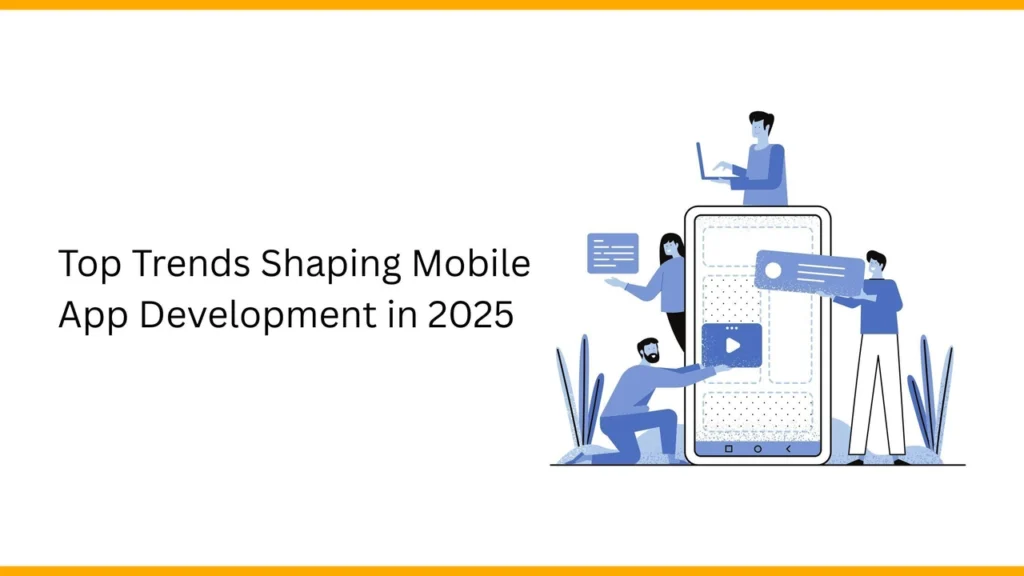In 2025, application development services are being redefined by a fusion of AI‑empowered tools, cloud‑native architectures, citizen‑developer platforms, and governance‑aware practices. For mid‑level developers and team leads, staying abreast of these trends is essential not only to deliver modern software but to maintain competitive edge and ensure robust, secure systems aligned with business goals.
1. AI‑Augmented Development: Productivity to the Power of 10
- AI coding agents like GitHub Copilot Reviewer, Cursor BugBot, and CodeRabbit have seen adoption surge from ~50% to ~82% in corporate settings, with AI‑powered code review growing from 39% to 76% by May 2025.
- These tools automate repetitive tasks code generation, unit testing, bug detection while enabling developers to focus on higher‑value, creative work.
- Elon Musk even frames this shift as turning coding into a creative pursuit, much like painting.
Tip: Start integrating AI tools into everyday workflows use them for scaffolding components, generating tests, or reviewing PRs and assign developers to validate and refine AI‑generated code.
2. Low‑Code / No‑Code & Citizen Development
- Gartner projects that by 2025, 70% of new applications will be built using low‑code or no‑code platforms—up from under 25% in 2020
- No‑code platforms now empower non‑developers to build functional apps via visual interfaces and templates
Tip: Leverage low‑code solutions for internal tools, routine workflows, or proof‑of‑concepts. Meanwhile, assign IT or experienced developers to govern platform usage, ensuring scalability, security, and maintainability.
3. Cloud‑Native & Serverless Architectures
- Cloud‑native design—supported by microservices, containers, and orchestration—is essential for scalable, resilient delivery
- Serverless computing and edge functions (e.g. AWS Lambda, Cloudflare Workers) reduce latency and operational burden while enabling cost‑efficient scaling
Tip: Decompose monoliths into microservices where practical, and pilot serverless functions for infrequent tasks (e.g. email triggers, image resizing). Monitor observability tools like OpenTelemetry to trace distributed flows.
4. Edge Computing & Global Performance Strategy
- Developers are pushing logic (like authentication or routing) out to the edge, using platforms like Cloudflare Workers, Vercel Edge Functions, and Deno Deploy resulting in consistently fast experiences worldwide.
Tip: Identify global‑region performance issues—shift latency‑sensitive logic to edge layers, and monitor performance metrics to guide further edge deployments.
5. Progressive Web Apps, SSR & Motion UI
- Progressive Web Apps (PWAs) have surged in credibility: offline support, push notifications, and installability make them a cost‑effective alternative to native apps
- Streaming server‑side rendering (SSR) with Next.js 14 or Nuxt 3 improves Time‑to‑First‑Byte and perceived performance
- Motion UI—micro‑interactions, transitions, visual feedback enhances usability and builds “feel” into apps using tools like Framer Motion or GSAP
Tip: Use SSR to optimize page load where SEO and perceived speed matter. Also invest in micro‑interactions to guide users and reduce cognitive friction.
6. Personalization & Real‑Time Analytics
- Delivering personalized UX tailored dashboards, onboarding flows, product suggestions is standard in 2025. Tools like Segment, Clerk, and Mixpanel help power user‑centric experiences.
- Real‑time analytics tools (e.g. PostHog, FullStory) help track usage, funnel metrics, and feature adoption to drive data‑informed decisions
Tip: Embed behavioral analytics early in development. Pilot personalization experiments (e.g. content variation, feature toggles) and measure outcomes.
7. Mobile & IoT Trends: 5G, AR/VR, Wearables
- 5G connectivity is enabling ultra‑responsive and streaming‑centric features for mobile/IoT apps in 2025
- Immersive experiences using AR/VR—product previews, training, gaming—are being embedded into apps across industries
- Wearable integration via smartwatches, fitness trackers, and IoT sensors is becoming mainstream in health, logistics, and commerce apps
Tip: If developing mobile or IoT apps, evaluate how 5G, AR, and wearable support could create value. Even pilot AR features (e.g. product visualizer) can differentiate.
8. Blockchain & Decentralized Apps
- Blockchain once niche has become practical for secure data exchange, audits, and dApps in domains such as finance, healthcare, and supply chains
Tip: Use blockchain selectively where decentralized trust or tamper‑proof logging are real requirements; avoid over‑engineering.
9. Sustainability & Green Engineering
- Sustainable development is a rising priority: green hosting, energy‑efficient code, and carbon‑aware design are increasingly baked into platform and business decision
Tip: Review hosting providers with sustainability credentials, optimize code and caching strategies, and consider measurable carbon footprints in cost‑benefit analyses.
10. Adaptive Governance & Security at Scale
- Democratization via low‑code and AI tools has decentralized development, raising new risk and compliance considerations
- Leading organizations embed risk and compliance experts into fusion teams, applying adaptive governance that balances innovation with security
Tip: Set up multidisciplinary teams involving IT, security, legal, and UX; create guidelines for citizen‑developer projects; automate vulnerability scans and compliance checks early.
Structural Overview / Comparison Table
| Trend Area | Why It Matters | Mid‑Level Role / Action Items |
| AI‑Augmented Development | Developer productivity & accuracy | Pilot Copilot, Bolt; review AI‑generated code |
| Low‑Code / No‑Code | Fast iteration & citizen dev | Govern platform use; support internal power users |
| Cloud‑Native / Serverless | Scalability, cost, resilience | Adopt microservices; instrument observability |
| Edge Computing | Global UX performance | Shift latency‑sensitive APIs to edge |
| PWAs, SSR & UI Motion | UX, speed, consistency | Use streaming SSR; add thoughtful micro‑interactions |
| Personalization & Analytics | User engagement & data‑driven UX | Implement analytics; deliver tailored experiences |
| Mobile, 5G, AR/VR & IoT | Next‑gen interactivity | Pilot AR or wearable integrations; design around 5G capabilities |
| Blockchain / dApps | Secure, auditable functionality | Use selectively in compliance/high‑trust scenarios |
| Sustainability | Cost, brand values, compliance | Choose green hosting; measure energy usage; optimize code |
| Governance & Security | Risk control, regulation alignment | Create fusion teams; automate compliance scanning |
Final Thoughts
As you build or lead application development services in 2025, blending AI tools, low‑code platforms, and cloud-native design with governed practices will be critical. This balanced ecosystem supports flexibility, speed, and innovation while protecting the organization from compliance or reliability missteps.
Pro tips:
- Measure ROI: track productivity gains from AI tools, platform usage metrics, or performance gains from edge deployments.
- Train and upskill: invest in foundational concepts microservices design, platform governance, user personalization logic.
- Pilot cautiously: start with low-risk experiments, learn quickly, then scale successful practices across teams.
By adopting these trends thoughtfully, your application development service becomes a strategic enabler driving growth, delighting users, and building trust.


